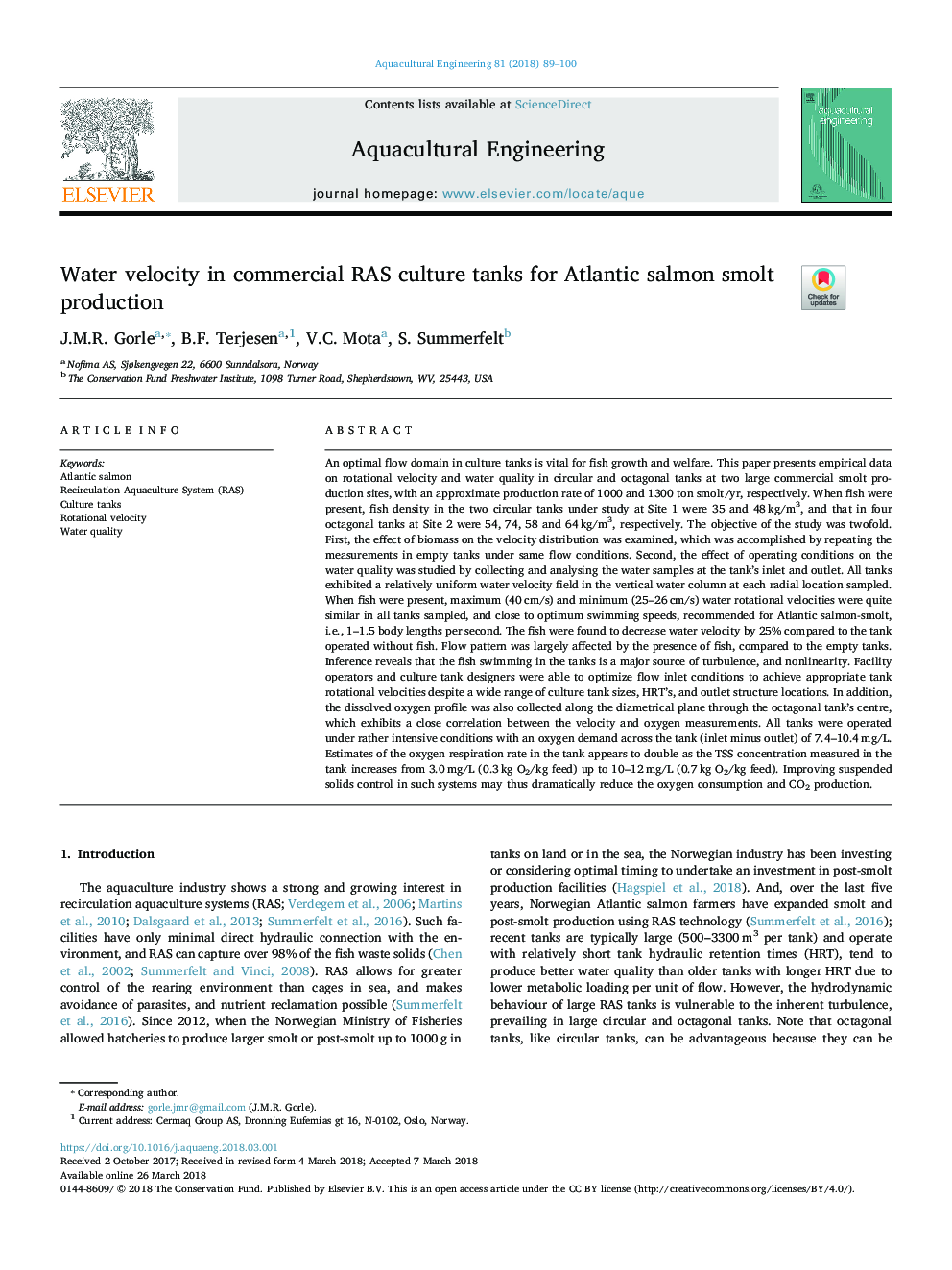| کد مقاله | کد نشریه | سال انتشار | مقاله انگلیسی | نسخه تمام متن |
|---|---|---|---|---|
| 8883518 | 1625691 | 2018 | 12 صفحه PDF | دانلود رایگان |
عنوان انگلیسی مقاله ISI
Water velocity in commercial RAS culture tanks for Atlantic salmon smolt production
دانلود مقاله + سفارش ترجمه
دانلود مقاله ISI انگلیسی
رایگان برای ایرانیان
موضوعات مرتبط
علوم زیستی و بیوفناوری
علوم کشاورزی و بیولوژیک
علوم آبزیان
پیش نمایش صفحه اول مقاله

چکیده انگلیسی
An optimal flow domain in culture tanks is vital for fish growth and welfare. This paper presents empirical data on rotational velocity and water quality in circular and octagonal tanks at two large commercial smolt production sites, with an approximate production rate of 1000 and 1300 ton smolt/yr, respectively. When fish were present, fish density in the two circular tanks under study at Site 1 were 35 and 48â¯kg/m3, and that in four octagonal tanks at Site 2 were 54, 74, 58 and 64â¯kg/m3, respectively. The objective of the study was twofold. First, the effect of biomass on the velocity distribution was examined, which was accomplished by repeating the measurements in empty tanks under same flow conditions. Second, the effect of operating conditions on the water quality was studied by collecting and analysing the water samples at the tank's inlet and outlet. All tanks exhibited a relatively uniform water velocity field in the vertical water column at each radial location sampled. When fish were present, maximum (40â¯cm/s) and minimum (25-26â¯cm/s) water rotational velocities were quite similar in all tanks sampled, and close to optimum swimming speeds, recommended for Atlantic salmon-smolt, i.e., 1-1.5 body lengths per second. The fish were found to decrease water velocity by 25% compared to the tank operated without fish. Flow pattern was largely affected by the presence of fish, compared to the empty tanks. Inference reveals that the fish swimming in the tanks is a major source of turbulence, and nonlinearity. Facility operators and culture tank designers were able to optimize flow inlet conditions to achieve appropriate tank rotational velocities despite a wide range of culture tank sizes, HRT's, and outlet structure locations. In addition, the dissolved oxygen profile was also collected along the diametrical plane through the octagonal tank's centre, which exhibits a close correlation between the velocity and oxygen measurements. All tanks were operated under rather intensive conditions with an oxygen demand across the tank (inlet minus outlet) of 7.4-10.4â¯mg/L. Estimates of the oxygen respiration rate in the tank appears to double as the TSS concentration measured in the tank increases from 3.0â¯mg/L (0.3â¯kg O2/kg feed) up to 10-12â¯mg/L (0.7â¯kg O2/kg feed). Improving suspended solids control in such systems may thus dramatically reduce the oxygen consumption and CO2 production.
ناشر
Database: Elsevier - ScienceDirect (ساینس دایرکت)
Journal: Aquacultural Engineering - Volume 81, May 2018, Pages 89-100
Journal: Aquacultural Engineering - Volume 81, May 2018, Pages 89-100
نویسندگان
J.M.R. Gorle, B.F. Terjesen, V.C. Mota, S. Summerfelt,